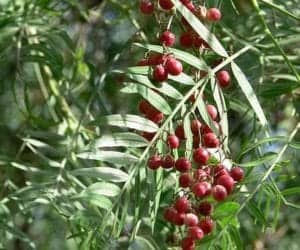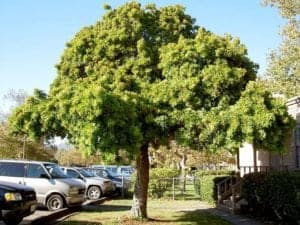Scientists may have unlocked a natural means of disabling the dangerous methicillin-resistant Staphylococcus aureus (MRSA) bacteria by using the berries of the Brazilian peppertree plant.
The red berries of the plant, which is considered an invasive species in Florida and other parts of the southern U.S., contain an extract that researchers at Emory University in Atlanta have harnessed to block MRSA.

The development constitutes a potentially giant leap forward in the fight against dangerous bacteria, because many, including MRSA, are immune to traditional antibiotics. About two million people in the U.S. become infected with antibiotic-resistant bacteria annually, with about 23,000 cases proving fatal, according to the CDC.
In studies on mice, researchers discovered that a “refined, flavone-rich composition” extracted from the peppertree plant’s berries halted the spread of MRSA by disrupting the bacteria’s communication channels.
“We pulled apart the chemical ingredients of the berries and systematically tested them against disease-causing bacteria to uncover a medicinal mechanism of this plant,” said lead author Cassandra Quave, assistant professor with Emory University’s Center for the Study of Human Health.
The peppertree-derived treatment doesn’t kill MRSA; instead, it disables its ability to spread. “It essentially disarms the MRSA bacteria, preventing it from excreting the toxins it uses as weapons to damage tissues,” said Quave. “The body’s normal immune system then stands a better chance of healing a wound.”
Related: Are There Too Many Antibiotics In Your Fast Food?
The study comes at an opportune time, when “widespread antibiotic resistance is on the rise and current therapies are becoming increasingly limited in both scope and efficacy,” write the researchers in Nature Scientific Reports.
Also, the fight against dangerous bacteria has essentially come to a standstill over the past several decades. “The latest classes of antibiotics introduced to the market were actually discovered between the 1950s and 1980s,” Quave said.
“Scientists have just been building off the same building blocks of earlier classes and modifying them slightly to create new antibiotics. Examining the extracts of plants used by traditional healers for infections may open up discovery of new chemical scaffolds for drug design, and provide important pathways for battling antibiotic-resistance,” she added.
Harnessing a History of Healing
The Emory University researchers looked to the past to discover a new approach to treat a modern scourge. “Traditional healers in the Amazon have used the Brazilian peppertree for hundreds of years to treat infections of the skin and soft tissues,” said Quave.
The ready abundance of the peppertree plant means that, should the treatment prove effective in human trials, the medical community would face no shortage of the disease-fighting berries.

“The Brazilian peppertree is not some exotic and rare plant found only on a remote mountaintop somewhere,” said Quave. “It’s a weed, and the bane of many a landowner in Florida.”
The next step for Quave and her colleagues is to take the extract to pre-clinical trials. From there, if all goes well, they would move forward with standard clinical trials under the FDA.
Ultimately, Quave believes that naturally-derived remedies hold vast potential for safe, effective treatment.
“In some cases, you need to go in heavily with antibiotics to treat a patient,” Quave said. “But instead of always setting a bomb off to kill an infection, there are situations where using an anti-virulence method may be just as effective, while also helping to restore balance to the health of a patient. More research is needed to better understand how we can best leverage anti-virulence therapeutics to improve patient outcomes.”
Related: The World Is ‘Grossly Unprepared’ for Infectious Disease Outbreaks
Richard Scott is a health care reporter focusing on health policy and public health. Richard keeps tabs on national health trends from his Philadelphia location and is an active member of the Association of Health Care Journalists.


![How To: ‘Fix’ Crepey Skin [Watch]](https://cdn.vitalupdates.com/wp-content/uploads/2017/05/bhmdad.png)












